Key moments in the history of the Catholic Review
1850

The Catholic Mirror, a privately-owned, fiercely independent predecessor to the Catholic Review, begins publishing. It provides reports on the expansion of the Catholic community in the Baltimore archdiocese and defends Catholic teachings in a Protestant-dominated society.
1853
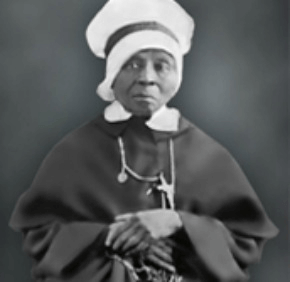
Although The Catholic Mirror offers limited coverage of the Black Catholic community, it features a report on the work of the Oblate Sisters of Providence, founded in Baltimore by Mother Mary Lange to educate African-American children. The article notes that African Americans in Baltimore “share in a more eminent degree than the whites in the injustice committed by our laws on education.”
The newspaper, however, largely sympathizes with the South in the growing sectional crisis leading up to the Civil War.
1861
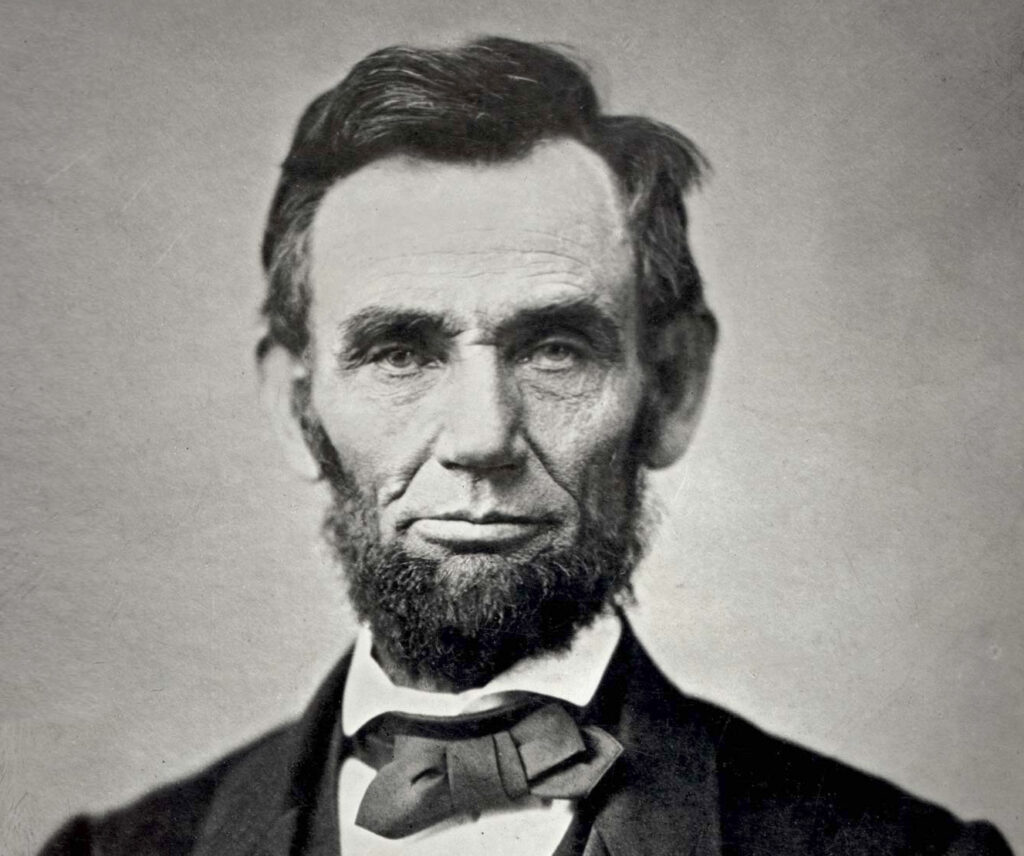
After the election of President Abraham Lincoln, The Catholic Mirror’s editors assert they would rather see the union dissolved than have the president “destroy what we believe to be Southern States’ Rights.”
1863
Michael J. Kelly and John B. Piet, publishers of The Catholic Mirror, are arrested for printing works of a “treasonable character.”
1864
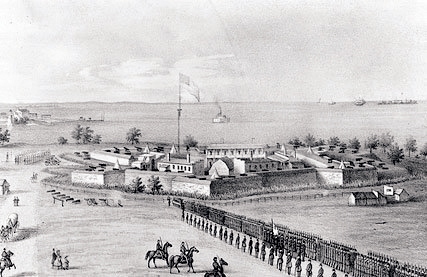
Kelly and Piet are arrested for selling a pamphlet critical of political arrests during the Civil War. They are imprisoned at Fort McHenry.
1865
After President Lincoln was assassinated, The Catholic Mirror calls for the healing of the country´s wounds. Yet, its southern allegiances still show through. In 1865, when some northerners were pressing for harsher treatment of the defeated South, The Catholic Mirror publishes an article, “Magnanimity,” pleading for tolerance.
1870s-1890s
The Catholic Mirror advocates religious tolerance as immigration soars. It defends against nativism and calls for support of Catholic missions to African Americans and American Indians.
1903
The Catholic Mirror covers the arrival in Baltimore of a community of religious sisters whose ministry focuses on continuously praying the rosary. The Dominican Sisters of the Perpetual Rosary were driven from their convent in Rouen, France, in a clash between church and state.
1908
The Catholic Mirror ceases publication.
1913
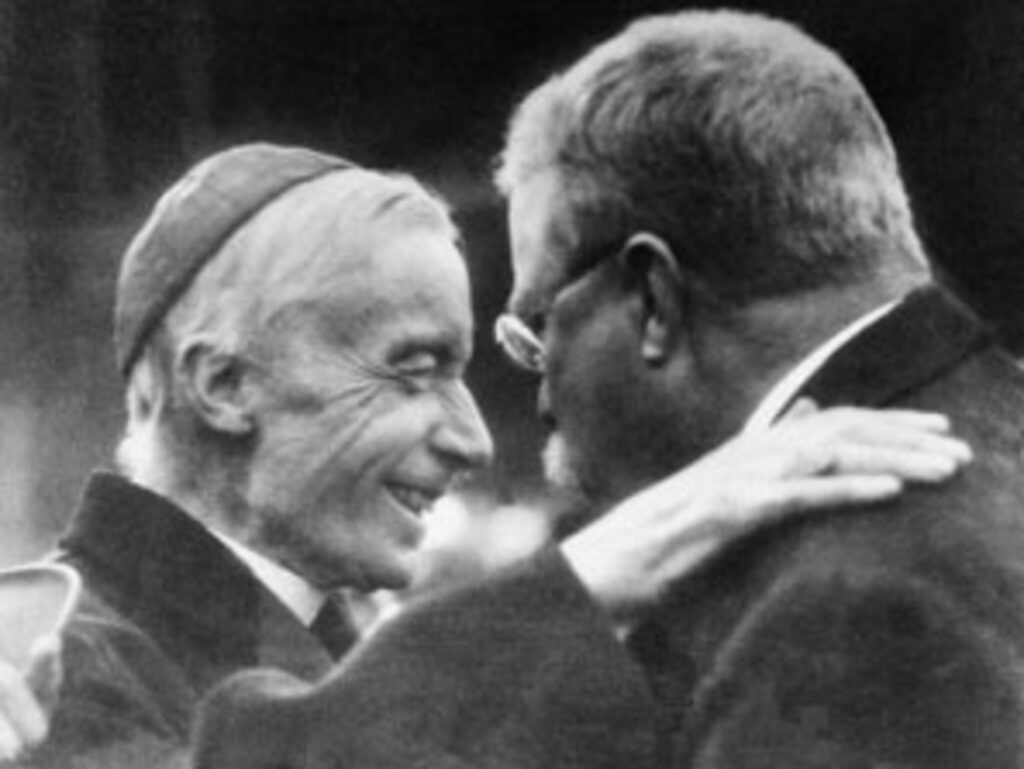
The Baltimore Catholic Review begins publishing with the blessing of Cardinal James Gibbons, the preeminent Catholic leader in the country who consulted with prominent civic leader such as President Theodore Roosevelt. The newspaper covers much of the cardinal’s activities during his many years leading the nation’s Premier See.
1914
The Catholic Review attacks a proposed law to allow unscheduled inspection of convents, calling the law’s proponents “moral polecats” and “addle-headed bigots.”
1920s
The Catholic Review publishes numerous articles opposing the bigotry of the Ku Klux Klan. It also fights Prohibition.
The extra edition of the Catholic Review, published on March 24, 1921, was the first paper in the United States to carry the news of the death of Baltimore Cardinal James Gibbons. It was sold on the streets of Baltimore before the other Baltimore papers were off the presses.
1934
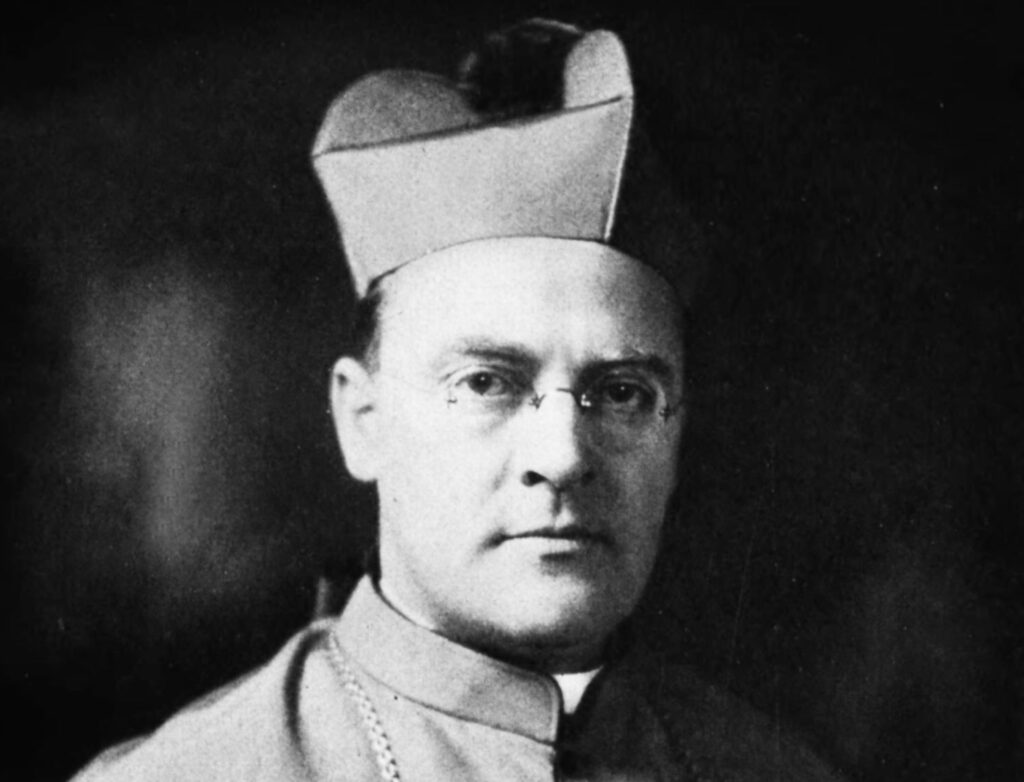
Upset when a Sun correspondent compares the zeal of Adolf Hitler to that of St. Ignatius Loyola, Archbishop Michael Curley demands an apology. When none comes, numerous articles and editorials appear in the Catholic Review denouncing The Sun, which was reported to have lost 50,000 subscribers in the flap. A qualified apology is negotiated in part by The Sun’s H.L. Mencken and Auxiliary Bishop John M. McNamara.
1936
“Baltimore” is removed from the newspaper’s name. It was inserted again briefly in 1965 before being removed.
1939
Excerpts from a fiery homily delivered by Archbishop Curley are published in the April 21, 1939, issue beneath a simple headline: “Out of War.”
“We have done nothing to stir up strife in Europe,” Archbishop Curley said. “We are not responsible for what is going on over there. We want to live in peace and we must be determined to live in peace.”
The archbishop urges listeners not to be swayed by what he called “war propaganda.”
1940s

Once the United States enters World War II, the newspaper provides reports on the service of men from the archdiocese while also covering the homefront. Promoting an active patriotism, it views the struggles against Nazism and fascism as righteous, valiant and completely American.
1948
The Catholic Review begins publishing papal encyclicals more than a decade before most other Catholic papers began the practice.
1950s
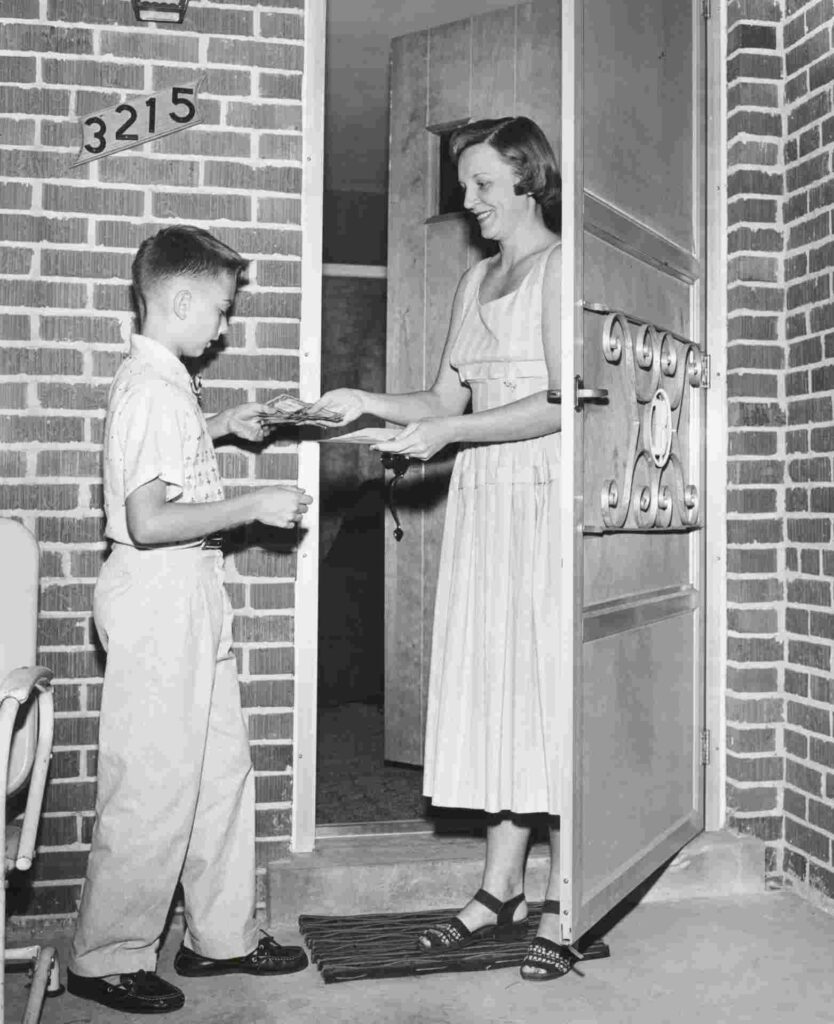
The Catholic Review publishes anti-Communist articles with headlines such as “Communists are slick in deceiving youth.” The newspaper is a strong supporter of the Maryland State Board of Motion Picture Censors and leads the charge against obscene movies.
The newspaper provides extensive coverage of booming Catholic schools, growing parishes and expanding Catholic charitable outreach.
Continuing an earlier tradition, Catholic school students sell subscriptions to the Catholic Review, earning prizes. Future CBS broadcaster, Charles Osgood, was among those school children who participated.
1963-65
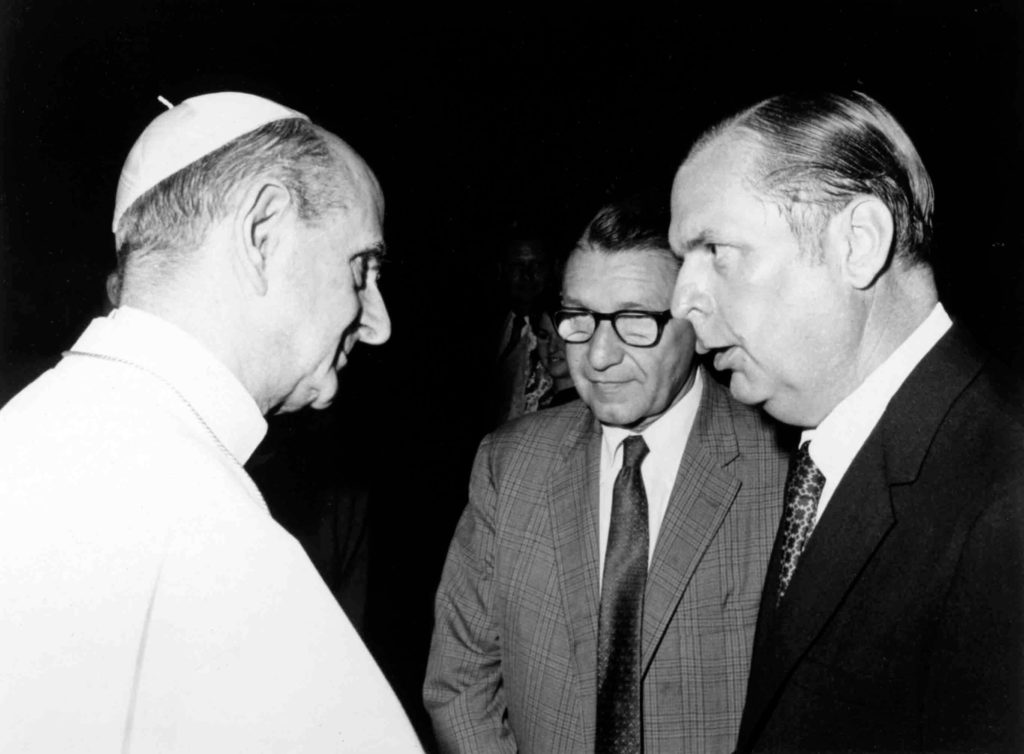
The Catholic Review aggressively covers the Second Vatican Council, publishing documents from the Council sessions between 1963 and 1965. When the council ended in 1965, Editor Arthur E. P. “Ed” Wall made sure the Catholic Review was the one archdiocesan newspaper in the United States to get the final documents from the council into print quickly.
“Nobody has ever disputed our claim to be the first to publish the entire text of Vatican II documents,” Wall told the Review in a 2015 interview. “We arranged for the pilot, TWA I think, to bring the last documents with him on a flight from Rome and they were immediately taken to our printer.”
1966
The newspaper publishes an “open letter” to George P. Mahoney, a Catholic candidate for governor who courted the anti-integration vote. It says the election of Mahoney “would mean a victory for forces which are hostile to everything honorable which being Catholic, American, Democrat and Irish should mean.”
1960s
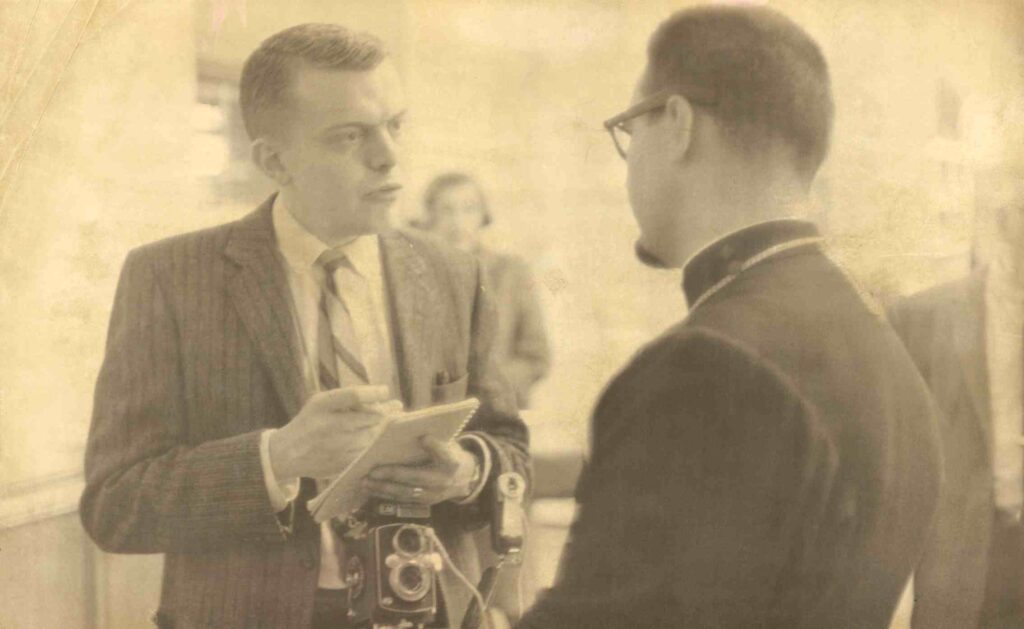
The Catholic Review publishes articles and editorials questioning the Vietnam War and what it views as the American bishops’ silence on the war. It also covers the Civil Rights movement and social changes of the era.
1970s
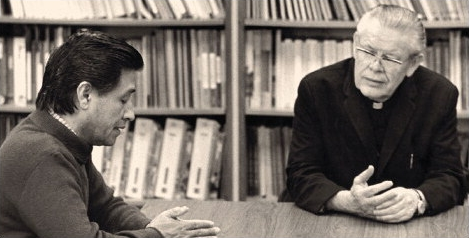
The Catholic Review explores the impact of the liturgical changes of the Second Vatican Council as parishes implement reforms.
The Catholic Review also covers a challenging period in the Archdiocese of Baltimore’s history as Archbishop William D. Borders deals with a budget deficit and a religious order funding scandal, along with the consolidation of Catholic schools and a push to desegregate public schools in the city.
1980s
The Catholic Review reports from Central America on social justice concerns.
1992
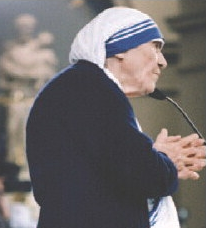
The Catholic Review, which had covered a 1970s presentation by St. Teresa of Kolkata at what was then the College of Notre Dame in Baltimore, covers the 1992 visit of the founder of the Missionaries of Charity as she opened the Gift of Hope AIDS hospice in the former convent at St. Wenceslaus in East Baltimore. The newspaper later chronicles her 1996 return visit to the city at the Basilica of the National Shrine of the Assumption of the Blessed Virgin Mary to receive the vows of 35 women who had joined her religious community.
1995
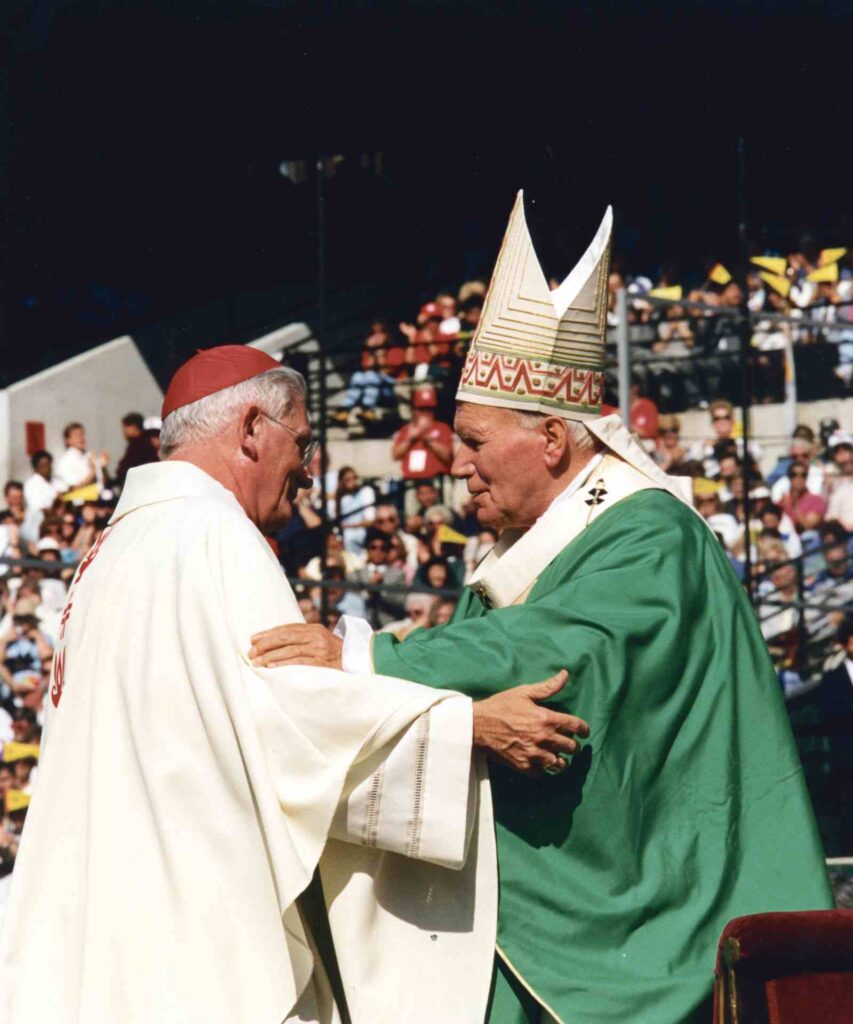
The Catholic Review publishes extensive coverage of the visit of St. John Paul II to Baltimore as he celebrates Mass at Oriole Park at Camden Yards and makes appearances at Our Daily Bread, the Basilica of the National Shrine of the Assumption of the Blessed Virgin Mary, the Cathedral of Mary Our Queen and St. Mary’s Seminary.
1997
CatholicReview.org is launched. Also in the late 1990s, the Catholic Review produces radio and television programs.
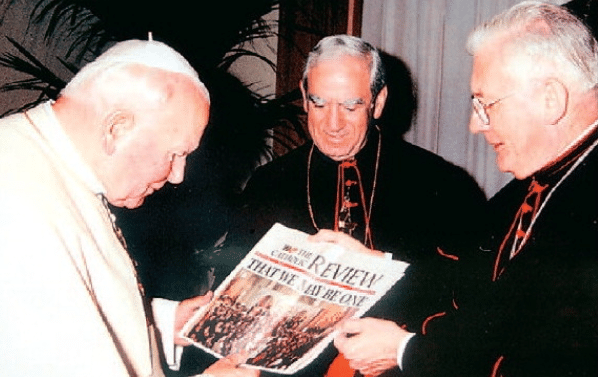
The Catholic Review publishes extensive coverage of the visit of Ecumenical Patriarch Bartholomew to Baltimore. Cardinal William H. Keeler (above, right) presented Pope John Paul II a copy of the Catholic Review’s coverage of the visit.
2001
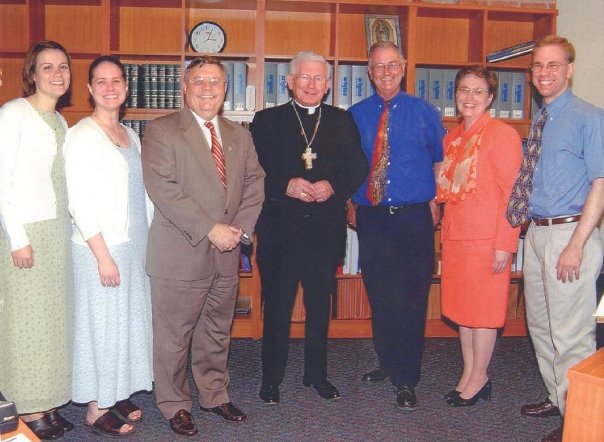
With the help of numerous articles and editorials from the Catholic Review pushing for passage of a program providing funding for nonreligious textbooks and technology in nonpublic schools, the Maryland Legislature passes the initiative.
The Catholic Review covers the local impact of the clergy sexual abuse crisis and the War on Terror.
2005
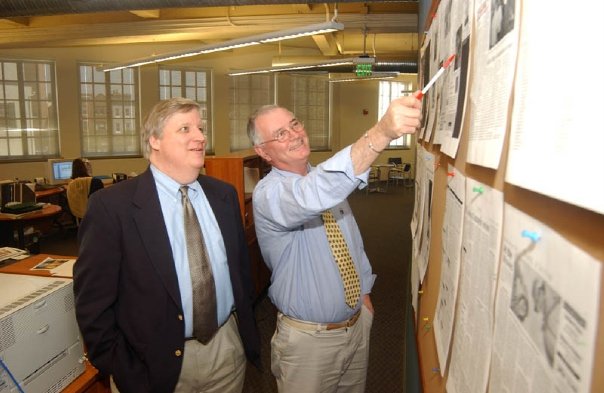
The Catholic Review provides special coverage of the death of St. John Paul II and the election of Pope Benedict XVI. It also covers the new pope’s 2008 visit to Washington, D.C.
2009
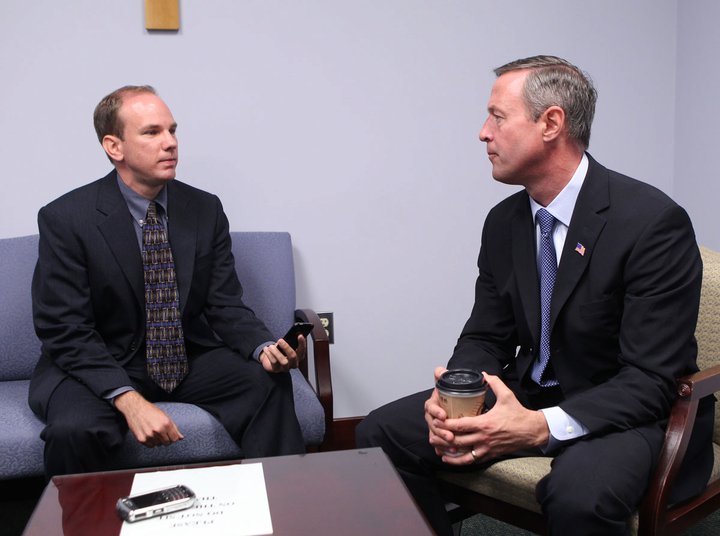
The Catholic Review enters the realm of social media, launching Twitter and Facebook pages. It develops an extensive lineup of local bloggers who contribute online commentaries on a variety of topics from politics to family life.
2012
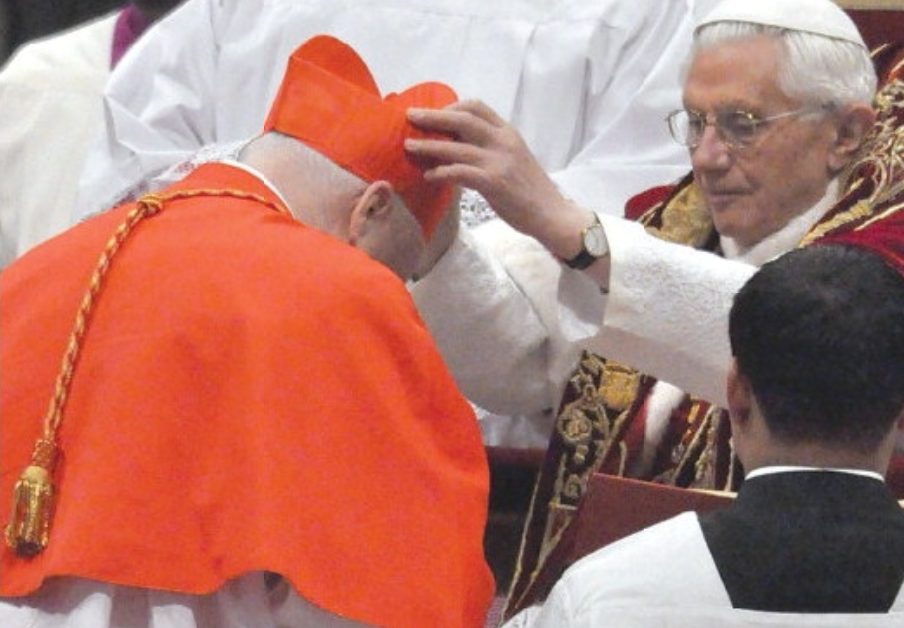
The Catholic Review covers Cardinal Edwin F. O’Brien’s Rome installation as a cardinal. The newspaper has a long history of covering Rome ceremonies involving archbishops of Baltimore.
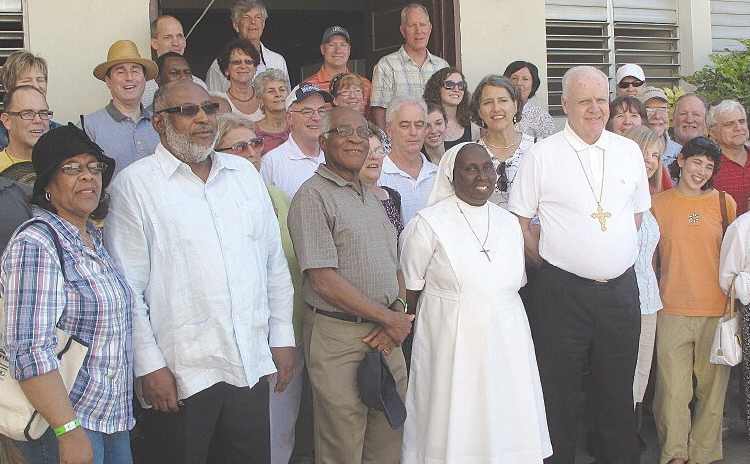
Also in 2012, the year the Catholic Review became a biweekly newspaper, the publication reports from Haiti on the dedication of a new high school made possible with support from the Archdiocese of Baltimore.
In the last two decades, the Catholic Review has sent its reporters and photographers across the globe to file stories from Italy, Guyana, Guatemala, Poland, Cuba, Spain, Czech Republic, Hungary, Turkey, France, Germany, Ireland, Nicaragua and more.
2013
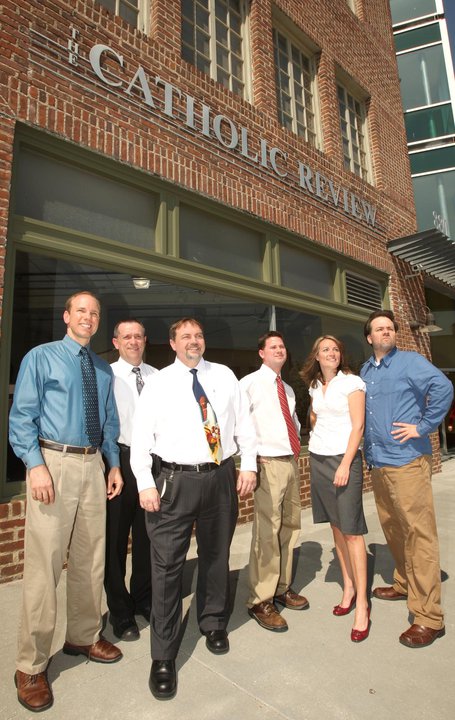
The Catholic Review is named newspaper of the year by the Maryland-Delaware- D.C. Press Association.
2015

The Catholic Review organizes “Feet for Francis,” an eight-day walk from Baltimore to Philadelphia to attend the World Meeting of Families with Pope Francis. Twenty-three pilgrims participated in the nearly 110-mile walk, led by Father John “Jack” Lombardi and Catholic Review Managing Editor Paul McMullen. In addition, readers donated more than 15 tons of shoes that were shipped to developing nations. The effort also raised nearly $12,000 for Catholic school scholarships for inner-city students in the Archdiocese of Baltimore.
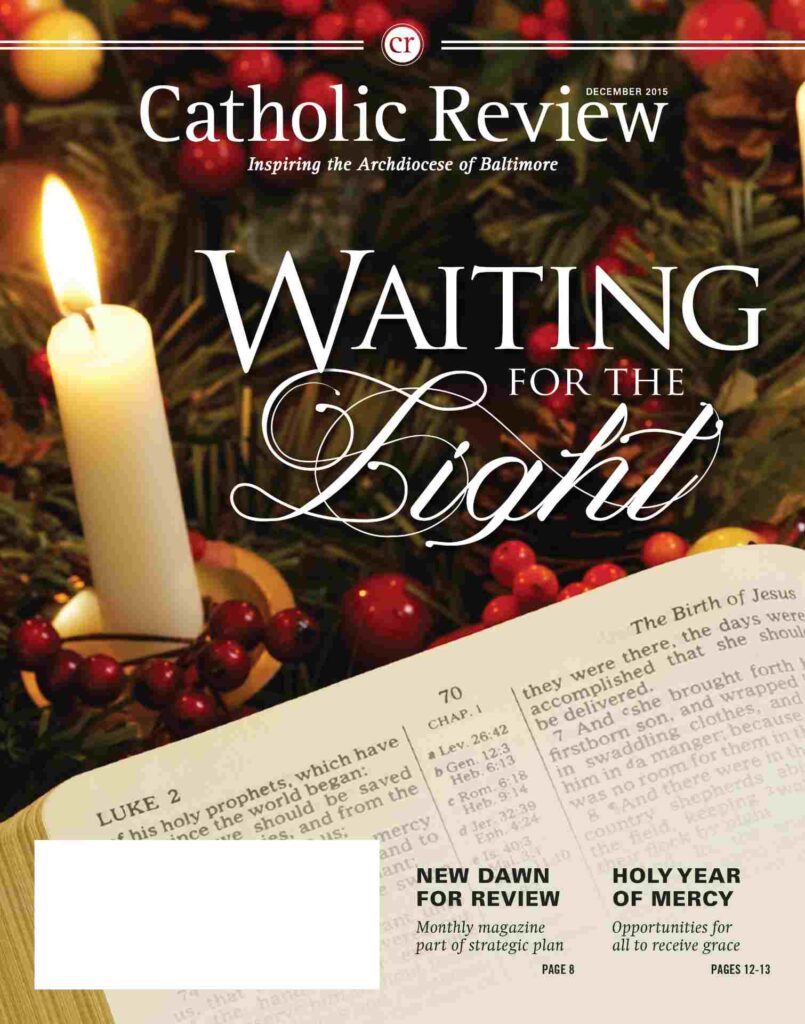
Also in 2015, the newspaper switches to a monthly, magazine format.
2016

A year after covering the 2015 unrest following the death of Freddie Gray while in police custody, the Catholic Review reports on a pilgrimage organized by Archbishop William E. Lori to visit Pope Francis in Rome. Ten interfaith leaders from Baltimore participated, traveling to Rome to pray for peace and healing in Baltimore. During the visit, Christopher Gunty, associate publisher and CEO of Catholic Review Media, presents a copy of the Catholic Review magazine to the pope .
2018

The Catholic Review is named news organization of the year by the Maryland-Delaware- D.C. Press Association.
2019
The Catholic Review is named news organization of the year by the Maryland-Delaware-D.C. Press Association for the second year in a row.
2020
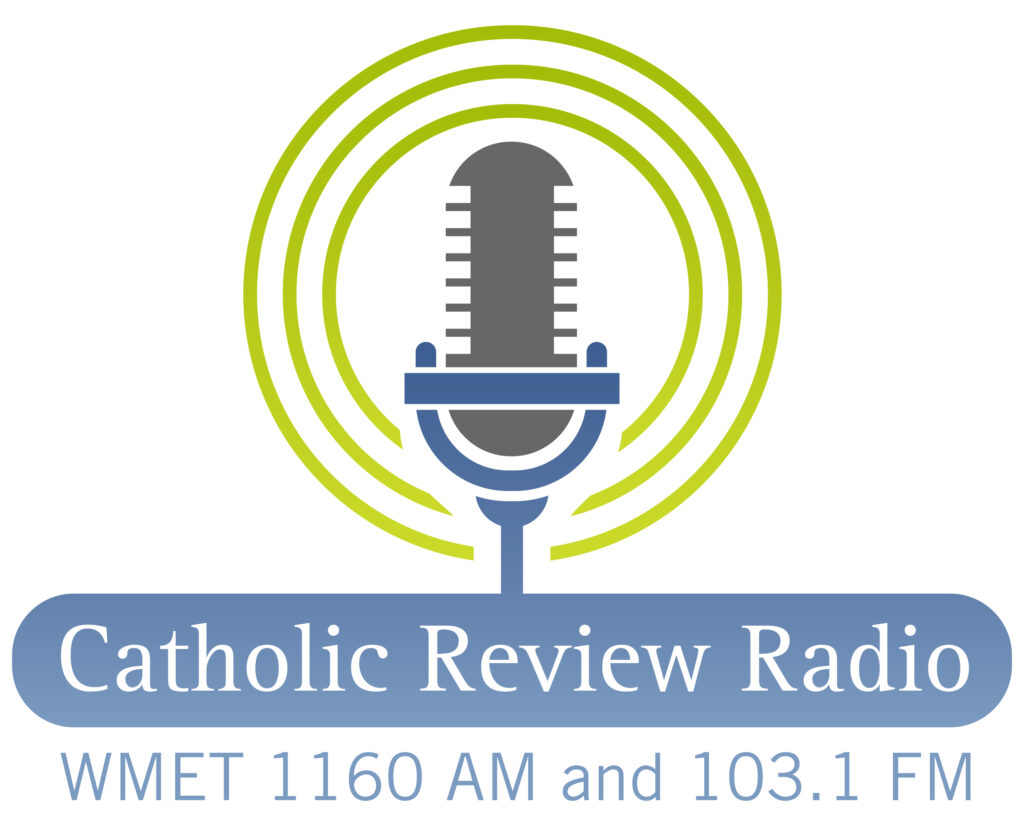
The Catholic Review is named new organization of the year by the Maryland-Delaware- D.C. Press Association for the third year in a row.
After producing and hosting the archdiocesan “Catholic Baltimore” radio program for several years, the program is rebranded “Catholic Review Radio” and moves to a new home at WMET 1160 AM and 103.1 FM.
2021
The Catholic Review is named news organization of the year by the Maryland-Delaware-D.C. Press Association for the fourth year in a row. It earns a total of 73 awards from three major press associations.
2022

The Catholic Review unveils a major redesign that includes a new logo and a new slogan: “Real life. Real faith.”
The Catholic Review is named news organization of the year by the Maryland-Delaware-D.C. Press Association for the fifth year in a row.
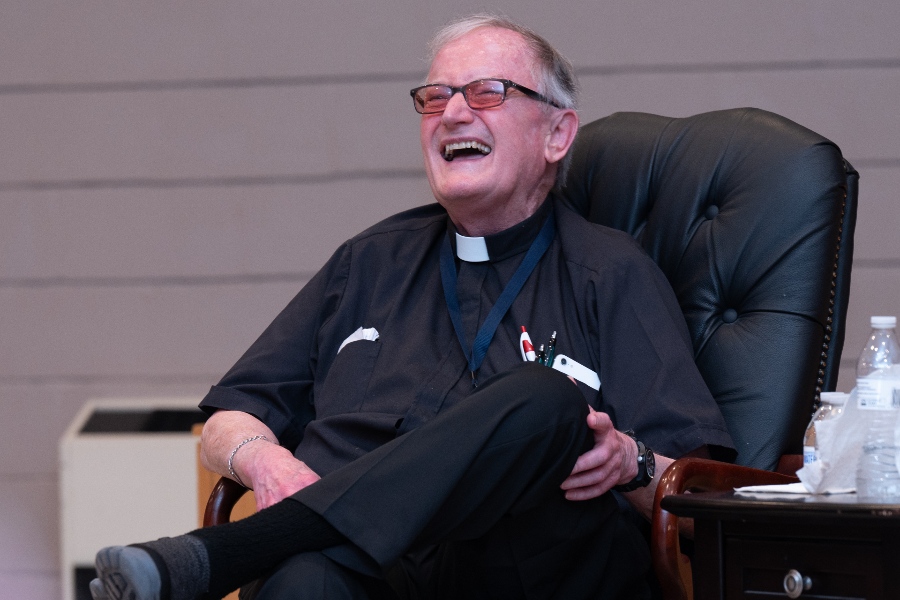
2023
After more than 50 years as a columnist for the Catholic Review, Father Joseph Breighner retires from writing.
The Catholic Review is named news organization of the year by the Maryland-Delaware-D.C. Press Association for the sixth year in a row.
